deconstructing sexual art

with
JESIKA JOY
_______________________
In
describing an evening of performance art, Mirror columnist
Matthew Hays writes: "And then, there’s Joy’s
Pig Heart. This is Joy’s exploration of the dual
sensations of desire and disgust. She dances with an actual
pig heart, rubs it all over her body and then rips it apart,
penetrating herself with a part of it."
Reaching for a kleenex, I thought to myself: We have come a
long way from Giotto's Adoration of the Magi, but is
it art," I asked the very persuasive and obliging Jesika
Joy during a midnight interview that took place in her green
garden after the Fall.
ARTS
& OPINION: Between you and your confessor, do you regard
yourself as a legitimate artist? If yes, why? If no, do I presume
you’re doing this to make a living? Noting that one should
‘never’ have to apologize for making a living.
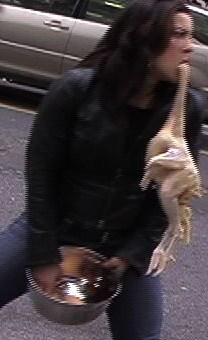 JESIKA
JOY: I guess this depends upon how one determines legitimacy.
My first inclination might have been to say that one’s
legitimacy as an artist is based upon the level one attains
in their practice and the seriousness with which one pursues
their work. Understood in this light I would have to answer
both yes and no.
JESIKA
JOY: I guess this depends upon how one determines legitimacy.
My first inclination might have been to say that one’s
legitimacy as an artist is based upon the level one attains
in their practice and the seriousness with which one pursues
their work. Understood in this light I would have to answer
both yes and no. 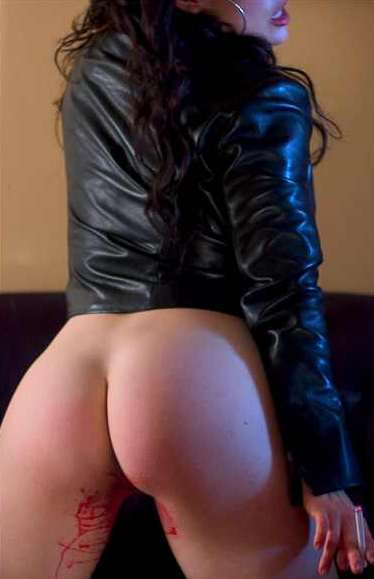 I
have a tendency to set high standards for myself and so I am
left in a position of potentially never fully attaining the
status of “artist.” But such thinking can be immobilizing.
Instead, I prefer to think about art-making less as a destination
and more as a process. In this way, art becomes one of the many
means I use to think through my relation to others and the world
I inhabit – a thinking through that is in constant dialogue
with my academic and spiritual practices as well as my political
commitments. I feel most “at home” in my work when
I understand it as just another way of doing feminism –
a project I have been engaged in since I was 14. When the question
legitimacy shifts from external measures of success to the honesty
and integrity though which I pursue my work, legitimacy itself
becomes a mute point.
I
have a tendency to set high standards for myself and so I am
left in a position of potentially never fully attaining the
status of “artist.” But such thinking can be immobilizing.
Instead, I prefer to think about art-making less as a destination
and more as a process. In this way, art becomes one of the many
means I use to think through my relation to others and the world
I inhabit – a thinking through that is in constant dialogue
with my academic and spiritual practices as well as my political
commitments. I feel most “at home” in my work when
I understand it as just another way of doing feminism –
a project I have been engaged in since I was 14. When the question
legitimacy shifts from external measures of success to the honesty
and integrity though which I pursue my work, legitimacy itself
becomes a mute point.
ARTS
& OPINION: From early Greek sculpture to the present, nudity
has been a permanent feature in the visual arts. Do you feel
part of this great tradition? And beyond that, do you think
you’re evolving it in your own fashion?
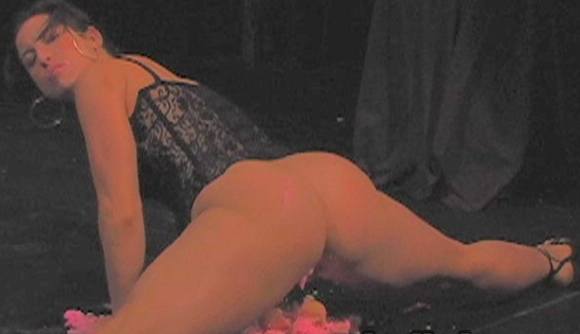 JESIKA
JOY: I think the nude has operated differently during different
artistic periods but when it comes to Modernism I would have
to say no – I do not feel I am part of this tradition.
I work against it – I am its ugly-beautiful opposition.
The Guerrilla Girls, a group of anonymous female artists who
wear guerrilla masks to stage political interventions, created
a now famous poster where they Photoshopped a guerrilla head
on an art historical nude by Ingres with a caption that read:
“Less than 3% of the artists in the Met. Museum are women,
but 83% of the nudes are female” (www.guerrillagirls.com).
This statistic, updated to 2004, would suggest that 97% of all
female nudes in the Met. Museum have been created by men (an
unfortunate fact that is similarly replicated in other major
galleries). I think it is fair to say then that the female nude
in the history of Western art has been a) over-represented and
b) over-represented from a specifically male perspective. The
female nude proliferated during Modernism but when we remember
that many of these representations were produced before women
were legally recognized as “persons” and all of
them before women secured basic reproductive rights, we must
ask what is at stake in these images? What kind of ideologies
do they reproduce? Who are their intended audience? How do they
function to seduce the viewer? None of this is to discredit
the beauty and merit of naked girls (or boys) in the museum
but it is to say that nudity in my images operates differently
from that of Modernism just as the nudity in Modernism operates
differently from that of the early Greeks. My project is aligned
with feminist, performance, and body-art traditions –
all of which do not content themselves with trying to “capture”
the nude as a object from afar. Instead, we become the work
itself …you still get to look at your pretty nude but
now she’s mouthing off. And you are forced to see her
differently.
JESIKA
JOY: I think the nude has operated differently during different
artistic periods but when it comes to Modernism I would have
to say no – I do not feel I am part of this tradition.
I work against it – I am its ugly-beautiful opposition.
The Guerrilla Girls, a group of anonymous female artists who
wear guerrilla masks to stage political interventions, created
a now famous poster where they Photoshopped a guerrilla head
on an art historical nude by Ingres with a caption that read:
“Less than 3% of the artists in the Met. Museum are women,
but 83% of the nudes are female” (www.guerrillagirls.com).
This statistic, updated to 2004, would suggest that 97% of all
female nudes in the Met. Museum have been created by men (an
unfortunate fact that is similarly replicated in other major
galleries). I think it is fair to say then that the female nude
in the history of Western art has been a) over-represented and
b) over-represented from a specifically male perspective. The
female nude proliferated during Modernism but when we remember
that many of these representations were produced before women
were legally recognized as “persons” and all of
them before women secured basic reproductive rights, we must
ask what is at stake in these images? What kind of ideologies
do they reproduce? Who are their intended audience? How do they
function to seduce the viewer? None of this is to discredit
the beauty and merit of naked girls (or boys) in the museum
but it is to say that nudity in my images operates differently
from that of Modernism just as the nudity in Modernism operates
differently from that of the early Greeks. My project is aligned
with feminist, performance, and body-art traditions –
all of which do not content themselves with trying to “capture”
the nude as a object from afar. Instead, we become the work
itself …you still get to look at your pretty nude but
now she’s mouthing off. And you are forced to see her
differently.
ARTS
& OPINION: Are you suggesting that the feminine nude, from
its first appearance, has been in the service of men’s
baser instincts? And since men have always been in control of
the market place, they’ve been able to set the agenda:
getting (paying) women to strip down and be immortalized on
canvas?
JESIKA
JOY: We might argue that during those times when access to naked
females was limited, the posing of men in their place was more
in the service of homoeroticism. But to answer your question
directly – “yes.” Men have not only set the
agenda by paying women (whose economic opportunities have been
limited) but through being the ones deciding upon the content
of the image. I might add that it is not simply appealing to
men’s baser instincts as if sexual representation were
an inherent problem. I am concerned with questions of authorship
– who gets to “author” whose body and along
what terms?
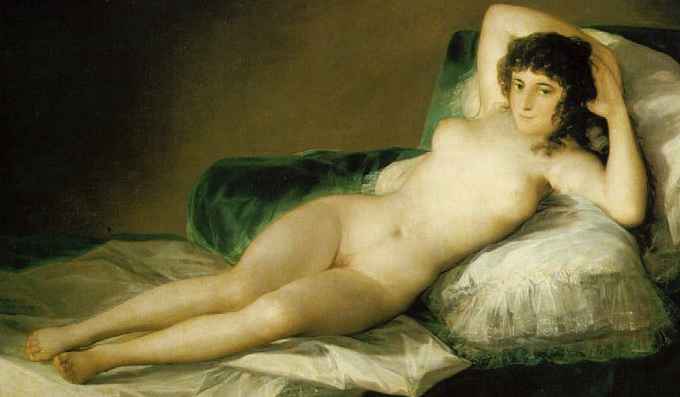 ARTS & OPINION: Is part of your mission to reveal the hypocrisy
and naked truth of the male agenda vis-à-vis the nude?
They wax intellectual over the artistic merit of the nude but
it’s arousal that brings them before the ‘work.’
And what you’re doing, is sticking this fact (tits, ass,
vagina) in our faces?
ARTS & OPINION: Is part of your mission to reveal the hypocrisy
and naked truth of the male agenda vis-à-vis the nude?
They wax intellectual over the artistic merit of the nude but
it’s arousal that brings them before the ‘work.’
And what you’re doing, is sticking this fact (tits, ass,
vagina) in our faces?
JESIKA
JOY: Yes, the critic and art historian do wax poetic but this
is not limited to the nude. While the formal properties of a
work, its relation to other artistic movements and the socio-economic
climate within which it was made are critically important areas
of investigation, they do not incite intense affect on their
own. It is the emotional ties we form with images that bring
us before the work – whether these ties are based in anger,
joy or arousal. While Freud would argue that all art-making
and viewing is sublimated sexual desire, other psychoanalytic
perspectives argue that our feelings result from the unconscious
need to incorporate the art object into psychic-selves or to
keep it out. Either way, art viewing is a deeply personal process
that cannot be understood through the intellect alone. But I
am not responding to art theory in my work. I am responding
to popular culture. We are saturated in sex and there is something
repulsive in its spiritual poverty.
ARTS
& OPINION: In other words, you want to make the case that
depicted or enacted sex (arousal) can be presented artistically
and in some cases, can stand alone as works of art? If yes,
how will my response be different if in both cases I’m
aroused?
JESIKA
JOY: This is a good question – one that I still haven’t
found an answer to. I am guessing your asking about the distinction
between porn and art or between feminist representations of
sexuality and those that reproduce sexist ideology. Really,
I think it is impossible to draw concrete lines or argue there
is an inherent distinction. Post-structural strategies for reading
art have displaced the author and image as sites for meaning
production. In other words, the author’s (or artist’s)
intention in creating work does not determine the final meaning
of the piece nor does the work’s content or form. Meaning
is found, rather, in the reading – in the viewer who comes
to the work with their own cultural and emotional baggage and
accesses what they see. Certain readings become dominant based
on their popularity or the cultural capital backing them up.
This is to say, artistic intention or content alone cannot be
used to distinguish between art and porn. Some argue that the
attempt to separate the two is a classist and moralizing project
wherein we label what we like as “art” (or erotica)
and what we don’t as “porn.” (As a note: I
have no problem with moralizing – we live our lives through
making value judgments between right and wrong. Refusing to
do so is pathological). Others argue that art can be distinguished
from porn through the viewer’s contemplation. This reading
is closer to my own and considers more carefully how the role
of the viewer shifts vis-à-vis its cultural object. One
can read art as one reads porn but their discourse would be
impoverished compared to the viewer who reads it as something
to contemplate. Trusting that she can rely on the covenant between
artist and viewer to seriously engage with the work, feminists
using sexual imagery play with cultural cues to encourage viewing
experiences closer to their intention knowing, however, they
do not have full control.
 ARTS & OPINION: So let’s segue to your body, which
was your first foray into art if I’m not mistaken. I’m
thinking of the work where you you’re holding a cigarette
in one hand, breasts are squeezed tight in a leather vest, naked
legs are wide open, vagina exposed and enclosed by what looks
like a complex, multi-coloured abstraction. First of all, what
brought about the realization that your art could be more effectively
represented on your body compared to conventional canvas? Was
this work intended to be viewed live and/or photo only?
ARTS & OPINION: So let’s segue to your body, which
was your first foray into art if I’m not mistaken. I’m
thinking of the work where you you’re holding a cigarette
in one hand, breasts are squeezed tight in a leather vest, naked
legs are wide open, vagina exposed and enclosed by what looks
like a complex, multi-coloured abstraction. First of all, what
brought about the realization that your art could be more effectively
represented on your body compared to conventional canvas? Was
this work intended to be viewed live and/or photo only?
JESIKA
JOY: In high school I did drawing, painting and sculpture. When
I started making art again during my Master’s I was interested
in graffiti art and painting. But the use of my own body was
immediate as soon as I picked up the video camera. It felt natural
and inevitable. I think this is because I was a competitive
gymnast as a child then in high school I competed in synchronized
swimming. Both sports involve performance – the explicit
use of the body in a theatrical way. While I do sometimes miss
painting, I can’t imagine I would ever leave body-based
performance behind. I enjoy the way the discipline is both intellectually
and physically demanding. This feels very genuine to me. While
all my work is performative, some of it is designed for live
audiences, some for the video camera and others work as performative
photographs. (By performative I am referring to implicit or
explicit role-play that often involves the body, costume or
gesture). It does occasionally happen that I create a live performance
which I then recognize would be more effective on camera or
decide to adapt a photo shoot to video but the work you are
referring to was designed as a still photograph.
ARTS
& OPINION: So let’s concentrate on performance body
art. First of all, do you feel sexy (aroused) during performance?
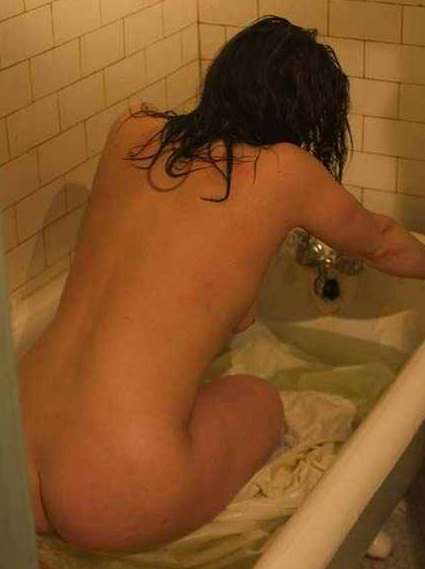
JESIKA
JOY: I think this question might demonstrate a misreading of
my practice. While sexuality and desire are operative in my
work so is anger, despair, angst and hope. Any arousal I feel
in the creation of work needs to be understood in relation to
the politics and other emotions that are being conveyed.
ARTS
& OPINION: Can an audience member ask you to position yourself
to better view the artwork that you are?
JESIKA
JOY: Absolutely! You wouldn’t hesitate to ask a professional
ballet dancer to throw more pirouettes in his choreography.
Nor would you hesitate to ask a symphony conductor to put more
emphasis on her percussion. So what would make you think it
is somehow inappropriate to ask a performance artist to position
herself differently? This, for me, is the absolute embodiment
of respectful audience engagement.
ARTS
& OPINION: If during a conventional exhibition, the audience
can look at a work from the perspective of his/her choice, does
the same hold during your body painting exhibitions?
JESIKA
JOY: Most of the time performance art is exhibited in gallery
spaces without fixed seating. Viewers are invited to walk around
the performance to view it from different perspectives provided
they do not interfere.
ARTS
& OPINION: Viewers are obviously interested in the sexual
aspect of your art, otherwise they would frequent conventional
exhibitions. The implication being that the appreciation of
art and arousal are compatible. And yet, I suspect that if the
Mona Lisa produced erections, it wouldn’t be regarded
as a work of art. Based on the feedback you’re getting,
have you been able to bridge the great divide?
JESIKA
JOY: I often exhibit my performance and video work in traditional
exhibition spaces; video festivals, gallery screenings, multi-media
festivals and literary nights. In this way, my viewers do frequent
conventional exhibitions – this is how they find out about
my work. And while the Mona Lisa doesn’t do much for me,
Picasso’s blue period gives me a hard on every time. In
any case, viewer feedback has taught me a lot about the strengths
and shortcomings of my work. Most female artists and intellectuals
feel a certain resonance with what I do. I think this is because
we often have experience negotiating being seen along terms
that are not congruous with our own self-image. (This happens
to everyone but it is more accentuated for women, people of
colour and the queer community). Female viewers tend to pick
up on the double messaging – they see a bloody exposed
vagina and read porn criticism, they see a passionate exchange
between a bride and a dead goat and read intimacy and sacrifice.
Men who haven’t had the same experiences or who aren’t
familiar with feminism might instead read sex on the rag and
bestiality. Unfortunately, we live in a culture that does more
to hone our “skills” for reading pornography than
it does our skills for reading contemporary art so this can
be frustrating. And I am left wondering if I am doing enough.
ARTS
& OPINION: How do you answer detractors who accuse you of
playing Andy Warhol art games: He wanted to prove that Americans
were the least discriminating art buyers on the planet so he
blew up a mass produced – which is the opposite of art
– Campbell’s soup wrapper to 10 x the original size
and sold it for thousands of dollars – and of course made
his point. You’re savvy enough to know that there are
a lot of people (men) out there who feel uncomfortable about
themselves taking a direct interest in erotica/pornography,
so you make it respectable for them by packaging it as art –
much like Playboy did in the 50s 60s, mixing serious
articles and interviews with naked women. Your comments:
JESIKA
JOY: For me, your description of how Warhol’s work operates
is incongruent with your comparison of my work to early Playboy.
You suggest, and I agree, that Warhol mimicked or played on
aspects of popular culture in order to make an artistic and/or
political intervention. Making erotica or pornography respectable
through the inclusion of serious articles and interviews is
not the same thing – it is not an artistic act that exists
as an end in itself, as artistic experimentation or political
observation. Playboy was interested in profitability. In this
way, while my work might share something in common with Warhol’s
art games, it is the antithesis early Playboy. As a
further comment, I disagree with your position on men being
uncomfortable with taking a direct interest in pornography and
erotica. To the extent that they are this becomes part of the
discourse around consuming pornography rather then being akin
to any kind of actual sexual repression (as Michel Foucault
might argue). My aim is to encourage discomfort – to trouble
the representational violence and heterosexism found in most
mainstream heterosexual pornography. By producing seductive
work infused with disturbing imagery I hope to render explicit
what is in fact disturbing about traditional pornography.
ARTS
& OPINION: With the exception of installation, works of
art are for sale. When you designate your body as canvas in
the service of art, is it for sale? If not, why not? Could I
temporarily place the art work that you are in a commercial
building or next to my fireplace? If not why not?
JESIKA
JOY: With the exception of apples, fruit is for sale. When you
designate your apples as oranges, are they for sale?
ARTS
& OPINION: What viewer response satisfies you most?
JESIKA
JOY: I am most satisfied with a viewer response that does not
just recognize the politics that are operative within my practice
but that recognizes what else is at stake in the work. These
would be interpretive responses that take seriously the existential
questions that arise through the images I create – questions
concerning the meaning of life, the nature of death as well
as spiritual approaches to these matters. I am also interested
in viewers who take seriously my play with intimacy –
what is the nature of self in relation to other and what might
this tell us of love as an ethical principle or social practice?
In this way, I am interested in a viewer response that recognizes
the sensitivity and emotional vulnerability present in my work
by looking past what is perhaps at first most apparent.
For
more of Jesika's art and philosophy, visit her website at: www.jesikajoy.com/stills/pe.html,
and for a review of her art by Peter
Goddard.